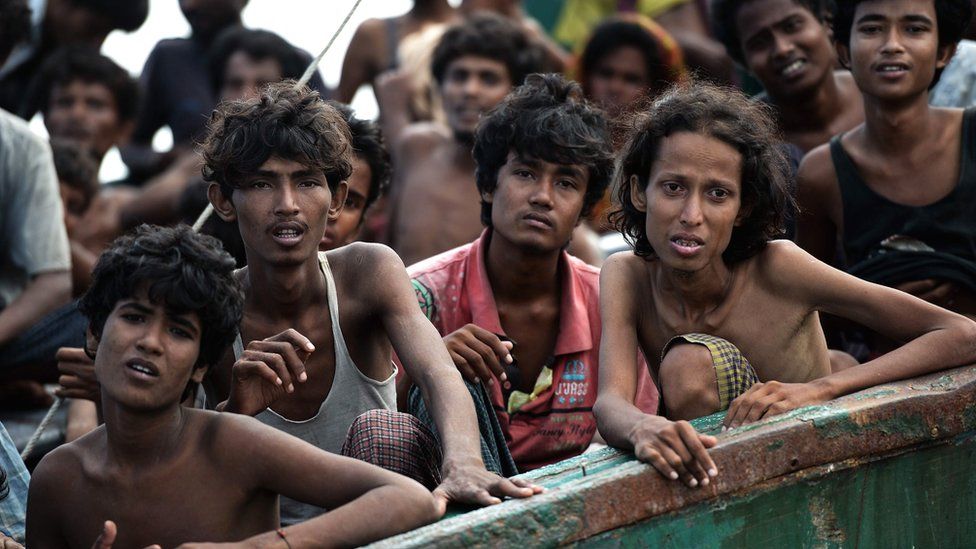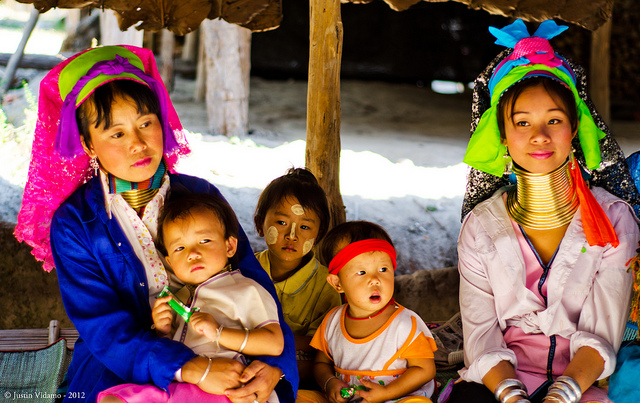People have seen the issue of human trafficking for numerous centuries in many countries. Ever since American service officers arrived in Thailand during the Vietnam War, sex trafficking became imminent there. In modern times, it has become one of the most popular places for this human trafficking industry. In 2007, it was estimated that there were about 60,000 prostitutes in the country under the age of 18. This number was soon said to be an underestimation as this issue was a very hidden crime in the country of Thailand. This idea shows how big of an industry that human trafficking is in Thailand. To go into more depth, trafficking is a twelve billion dollar industry in Thailand, which makes it an easier money maker than the drug trade.

The country of Thailand's geographical location makes it very vulnerable to human traffickers. Land routes from neighboring countries, like Cambodia and Myanmar, into Thailand are extremely insecure and deal with many corruption issues. This allows human traffickers to be able to smuggle people into the country much easier than any other country. The most common form of human trafficking in Thailand is by boat. This is because the country is neighbored by the Gulf of Thailand, which makes it easier to use boat transportation. In Thailand, the fishing industry is a huge part of their economy, so many boats go out on the Gulf to fish. These boats used for fishing tend to not return from up to three years, which makes it hard for their activity to be monitored by authorities. In Thailand, there are lots of different forms of trafficking networks. These networks work across borders through the use of brokers, which are middlemen who tend to facilitate employment for the migrant workers. They play a huge role in the job placement of this industry. The most common form of human trafficking in Thailand is through individual networks or networks of friends, family members, or previous victims.
Many different people find themselves to be victims of human trafficking. However, the most common victims in Thailand are those of Thai descent. Victims in Thailand become trafficked domestically and internationally in many different forms. Within this group of common victims, the large portion is made up of migrants from neighboring countries. These victims tend to migrate from their home countries, like China, Vietnam, and Russia in search of better opportunities in life. This allows for irregular migration to increase in Thailand. It is a common trend that meets the labor demands of these low-skilled employment areas. Some more people that are at great risk of being trafficked are ethnic minorities and stateless persons. Some aspects that make these people more vulnerable to trafficking is their language barrier in Thailand and their low socioeconomic status.
They are not really any specific profiles of human traffickers. Their profiles tend to vary considerably in Thailand. Traffickers can be either women or men, but they tend to be men in most cases. They can also be of Thai nationality, or they can be of any other nationality. Human traffickers can be in certain organized networks that allow them to produce fake documents and avoid the specific immigration requirements. On the other hand, traffickers can act on their own and grasp their own opportunities to earn money for seducing vulnerable people into sexual exploitation.
In a 2007 BBC interview, an unnamed human trafficker in Thailand, who was also a victim of human trafficking, discussed how she trafficked underage boys domestically. She also talked about how she tended to go for boys from the ages of eleven to thirteen and would lock them up at the bar that she worked at during that time. She would mostly find these boys in Bangkok, and she used vans to collect them. Her reason behind doing so was she thought that these boys would have a much better life with her than they would have at their home or on the streets. This type of trafficking was seen a lot because of the huge issue of poverty in Thailand. Poverty can in turn drive children to enter into this industry, as it may seem like their only option to make enough for a living. These types of girls are normally not educated and have no skills, so it is very hard for them to make enough money for themselves and their families.

Human trafficking is still a major issue in the country of Thailand, however there has been some hope in improving this issue. Thailand put into affect a comprehensive anti-trafficking law in 2008 known as the anti-TIP Act, and it is still in affect today. This act criminalizes human trafficking and provides for human trafficking victims in Thailand. After this act was passed, Thailand then published its National Policy Strategies and Measures of 2011-2016 to prevent and lessen human trafficking. One issue with these prevention tactics is that the government and the police force lack the capacity to enforce these laws. To prove this idea, the 2011 United States Department of State Trafficking in Persons report for Thailand illustrated the local police corruption, including their involvement in facilitating trafficking, which in turn negatively affected the anti-trafficking efforts. On a positive note, however; according to reports released by the Thai anti-trafficking department, the police have rescued over nine hundred victims of trafficking in the year of 2019. This gives us hope that this issue is lessening and the police force is becoming less corrupt in Thailand. Another industry that has begun to take steps to solve this issue is the hotel industry in Thailand. An example of this is Airbnb works with No Traffick Ahead and the Department of Homeland Security's Blue Campaign, which provides people with education about human trafficking and how one can combat the issue. UNICEF has also become engaged in combatting this issue. They provide economic support for families, so that their children will not become involved in this dangerous trafficking industry.
There have been steps in the right direction for the improvement of this huge issue in Thailand, however; they still have a long way to go to fully solve the issue. The government has fully pledged to continue fighting for the human trafficking issue in Thailand, which gives us hope for the future of this country.
Sources
About the author Andrew Small Posted In: Child rights | Law, Small, A., Posted In: Child rights | Law, & *, N. (2020, May 1). The origins and harsh reality of human trafficking in Thailand. LSE Human Rights. Retrieved February 23, 2022, from https://blogs.lse.ac.uk/humanrights/2015/04/24/the-origins-and-harsh-reality-of-human-trafficking-in-thailand/
The Thai Government's Response to Human Trafficking: Areas of Strength and Suggestions for Improvement. The Thai government's response to human trafficking: Areas of strength and suggestions for improvement (PART1). (n.d.). Retrieved February 23, 2022, from http://thailawforum.com/articles/thailand-human-trafficking.html
Thelwell, K., & Project, B. (2019, December 16). Worst Countries for Human Trafficking. The Borgen Project. Retrieved February 23, 2022, from https://borgenproject.org/tag/worst-countries-for-human-trafficking/


No comments:
Post a Comment